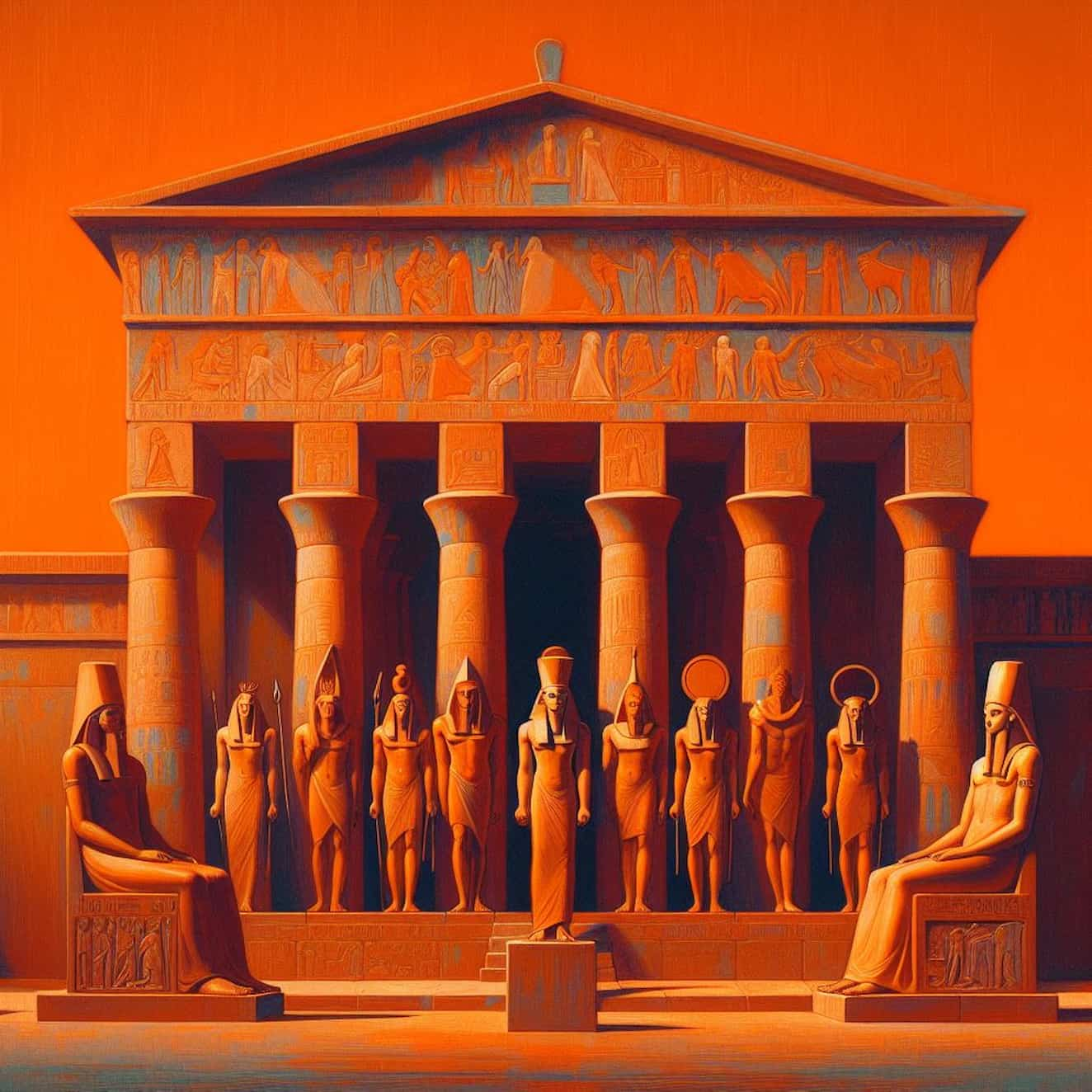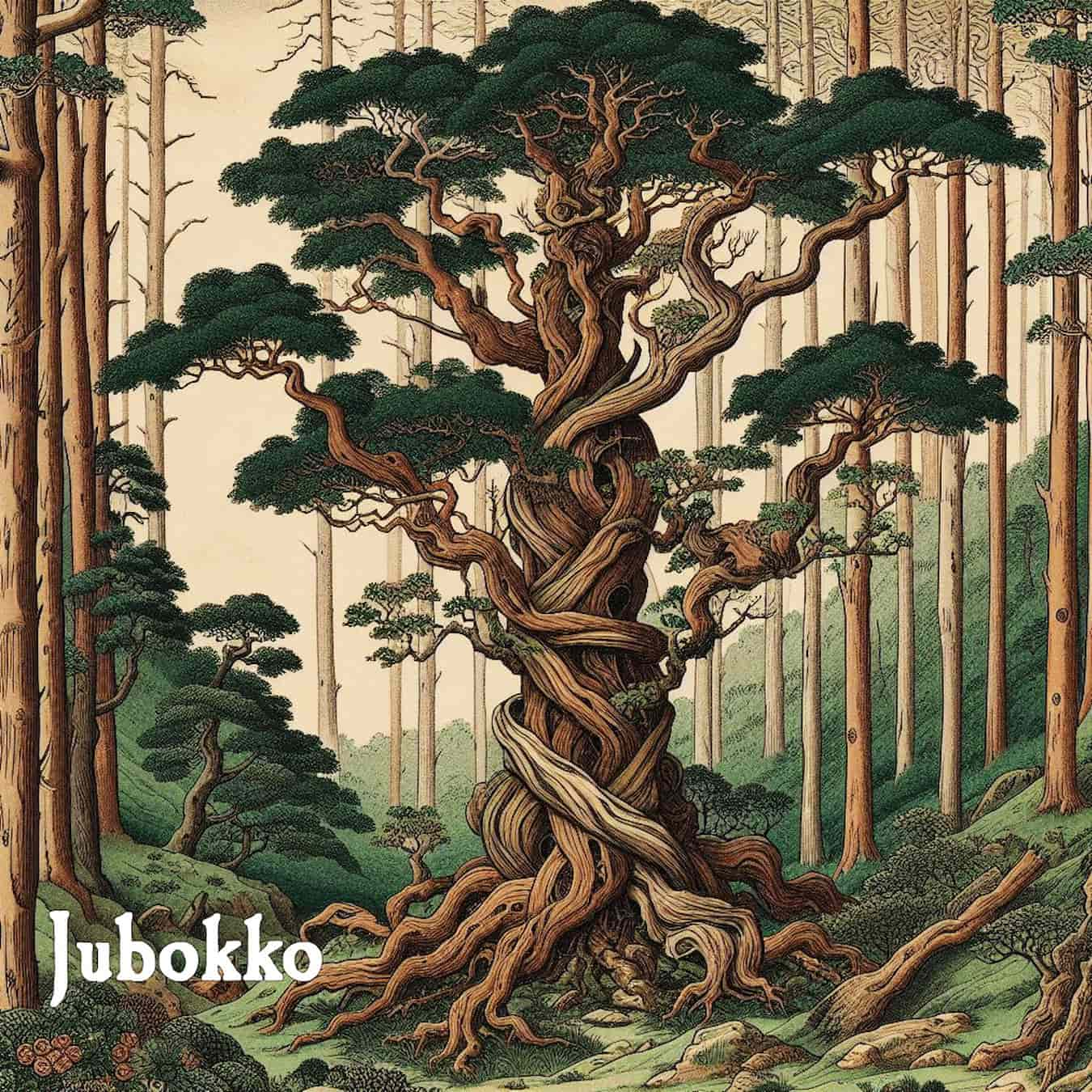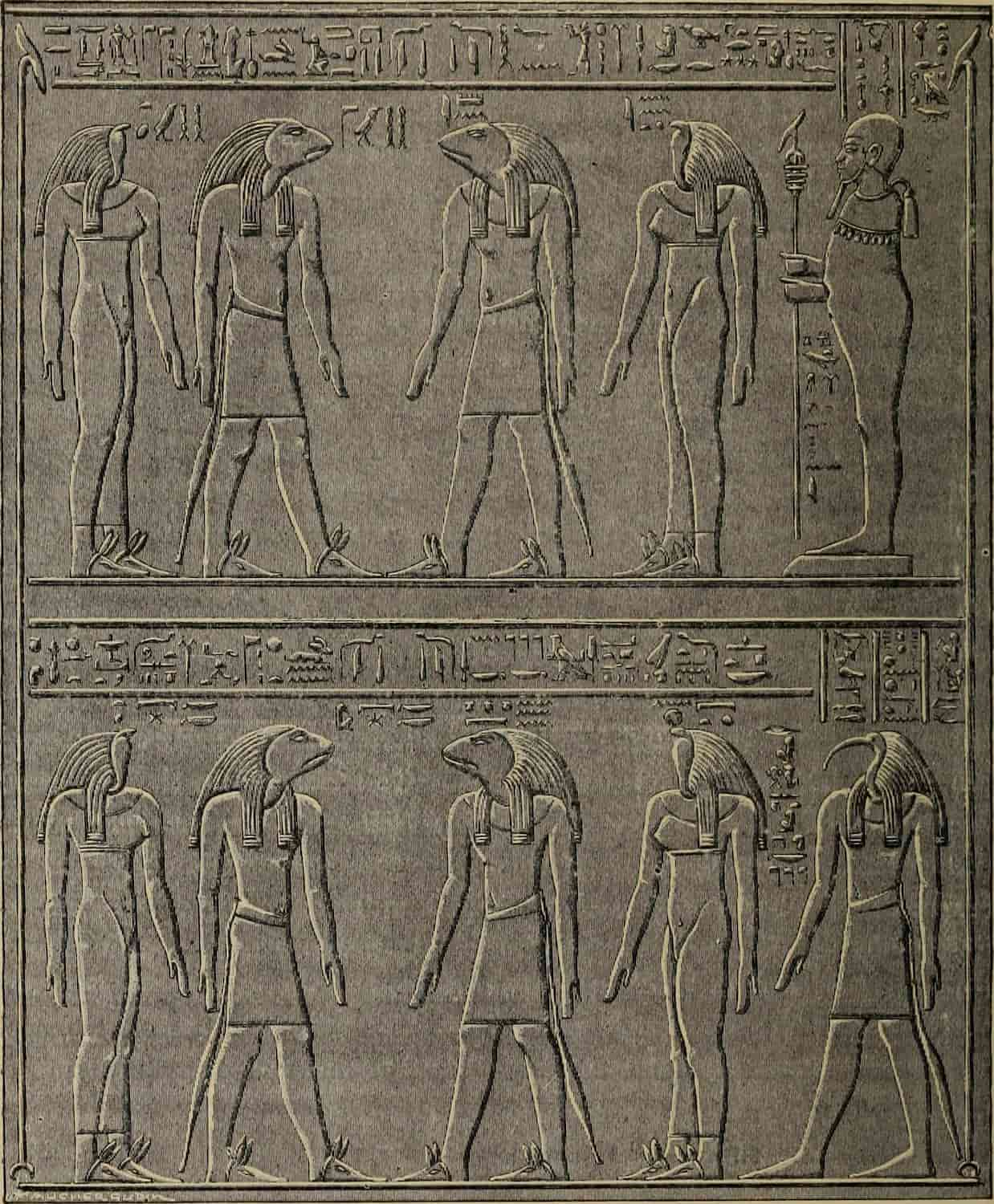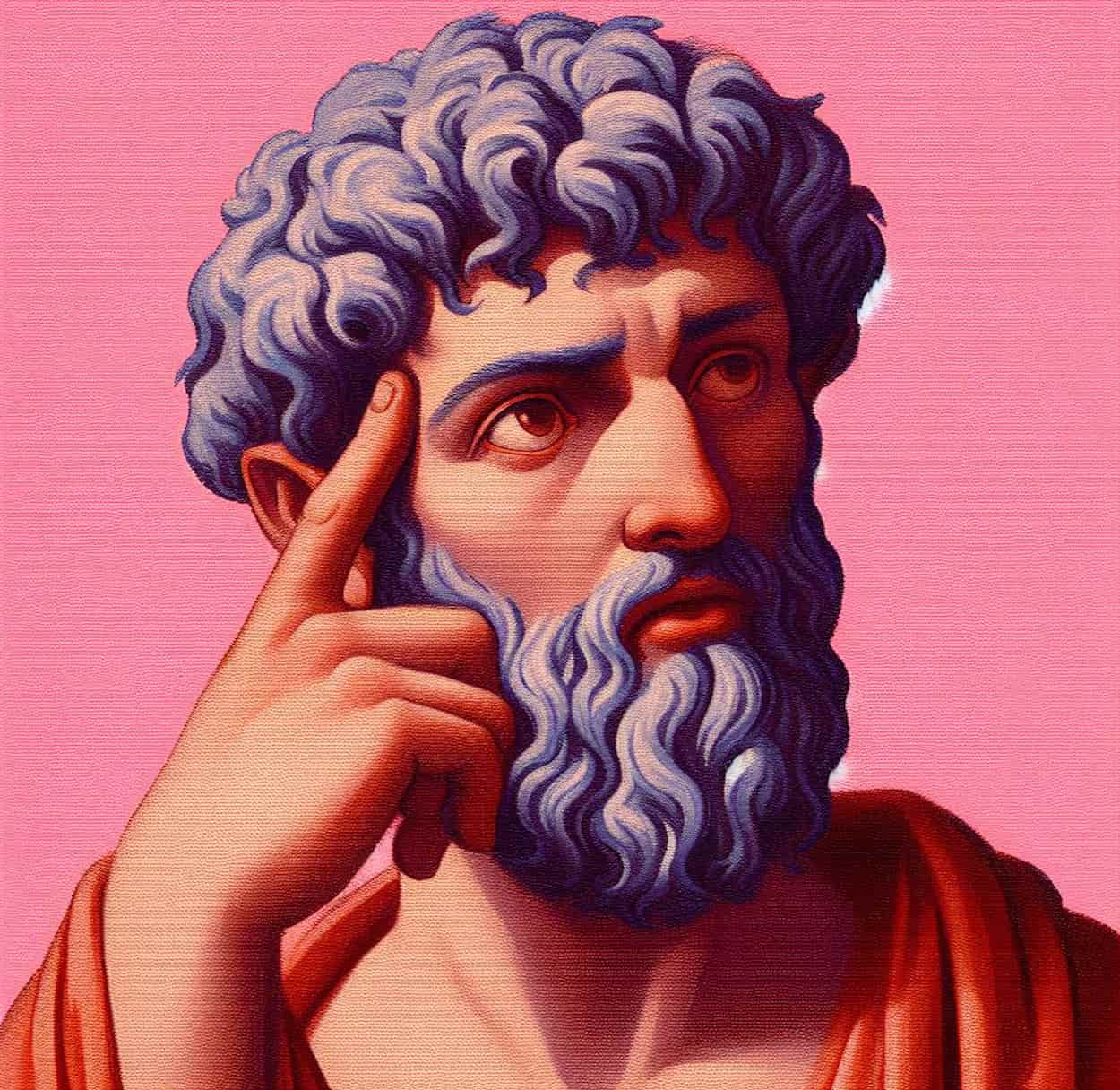The Ennead (known in Egyptian as pesedjet, Greek Εννεάδα – Ennead) is a concept in ancient Egyptian mythology and theology developed in the significant religious center of Heliopolis in Lower Egypt. It encompasses one of the variants of the Egyptians’ belief regarding the origin of gods, the world, and its organization. It served as a fundamental element of royal ideology throughout the ancient period, making it arguably the most influential of all cosmogonic concepts. While the teachings about the Heliopolis Ennead are textually traceable only in the Pyramid Texts from the transition period between the 5th and 6th dynasties, scholars widely assume that its essential components are much older.
The number 9 holds symbolic significance here: in Egyptian, the number three represented a plural, so its multiplication by itself signifies a plural of plurals – the most complete number, perfect fullness. Therefore, the concept of Ennead denotes not just a sum of certain gods but a community of gods in its semantic completeness. Thus, the actual number of its members could be expanded to more than nine; in some cases, it is used as if Ennead were an independent goddess. In this sense, following the model from Heliopolis, similar Ennead were later created as expressions of perfect completeness in other religious centers, such as Ptah’s Ennead in Memphis, Amon’s Ennead in Thebes with fifteen members, and Abydos with seven or eleven members. To distinguish it from these secondarily created groups, the Heliopolis Ennead was sometimes referred to as the Great Ennead.
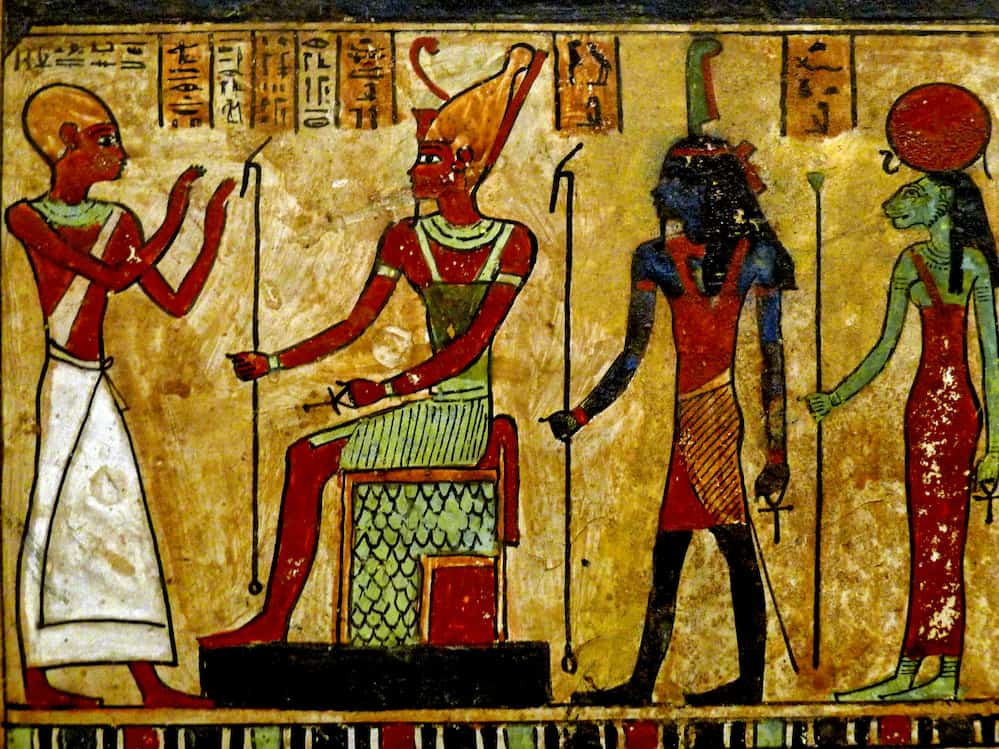
Structure of the Ennead
The structure of the Ennead (although the use of the word “structure” may be debatable) is fully derived from Heliopolis cosmology and the myth of the world’s creation. According to this myth, from the primordial waters of Nu emerged the sun god Atum, who then created the goddess Tefnut and the god Shu from himself. Together, they begot the offspring of the god Geb and the goddess Nut. This quintet of gods constitutes the world itself, as Shu and Tefnut are the gods of dry and moist air (sometimes cited as the gods of air and the goddess of morning dew), Geb represents the earth, and Nut is the celestial vault. Atum is then the sun, illuminating all and bringing life.
Nut and Geb also produced offspring, but by their birth, the god Thoth intervened, although he is not part of the Ennead. Their offspring were Osiris (Greek: Usirev), Set (Greek: Seth), Isis (Greek: Eset), and Nephthys (Greek: Nebthet). This quartet is closely associated with the Osirian myth, thus becoming part of the Ennead mythology. The sum of these gods results in the number nine.
In addition to these fundamental nine deities, the Ennead also includes other gods, specifically Horus, the son of Isis and Osiris, and Anubis (Greek: Anup), the son of Nephthys and Osiris.
Members of the Ennead
- Atum – the first god, god of the sun, creator
- Tefnut – goddess of moist air, or morning dew
- Shu – god of dry air, or air
- Nut – goddess of the sky and embodiment of the celestial vault
- Geb – god of the earth
- Osiris – ruler of the Black Land (Kemet), later ruler of the realm of the dead
- Set – ruler of the Red Land (Desret), later god of chaos and anger
- Isis – protective goddess of the throne, wife of Osiris, mother of Horus (and the ruler), later also goddess of love
- Nephthys – twin goddess of Isis, wife of Set but in love with Osiris (see Anubis)
Other members
- Ra – sun god, in the form of Ra-Atum stood at the top of the Ennead and later merged completely with Atum
- Horus – son of Osiris and Isis
- Anubis – son of Osiris and Nephthys
- Sons of Horus
Development of the Ennead
Although the original main god of the city of Heliopolis and therefore the highest god of the Ennead was Atum, already in the Old Kingdom, Heliopolis also became the center of the cult of another sun god, Ra. In connection with this, and also with the rise of his cult during the reign of the sun kings of the 5th dynasty, when he became part of the royal titulary with the phrase “Son of Ra,” there was also his connection with Heliopolis mythology. There was a merging of Ra and Atum into the deity Ra-Atum, and later Atum even became just one of Re’s names.
No later than during the New Kingdom, with the considerable rise in importance of the cult of Amun, there was also a merging of Ra with Amun. Amun-Ra (sometimes also Amun-Ra) emerged. This god, referred to as the king of the gods, was both Ra and therefore the creator of the world according to Heliopolis cosmology, and through Amun-Ra, Amun also became him.
However, during the Old Kingdom, Ra was still considered the highest representative of the Ennead, and in the city of Heliopolis itself, Atum did not lose his role as an independent deity.
Nine Members of Ennead
Ennead is the Nine Great of Heliopolis, which are the nine highest gods in the Egyptian pantheon. They form part of the “closed family” system of Ra, the sun god, creating a kind of “protective dynasty” around him. They are therefore called the Nine Great of Heliopolis, a city venerating Ra. They include: Ra, Geb, Nut, Shu, Tefnut, Osiris, Isis, Seth, and Nephthys.
Ra
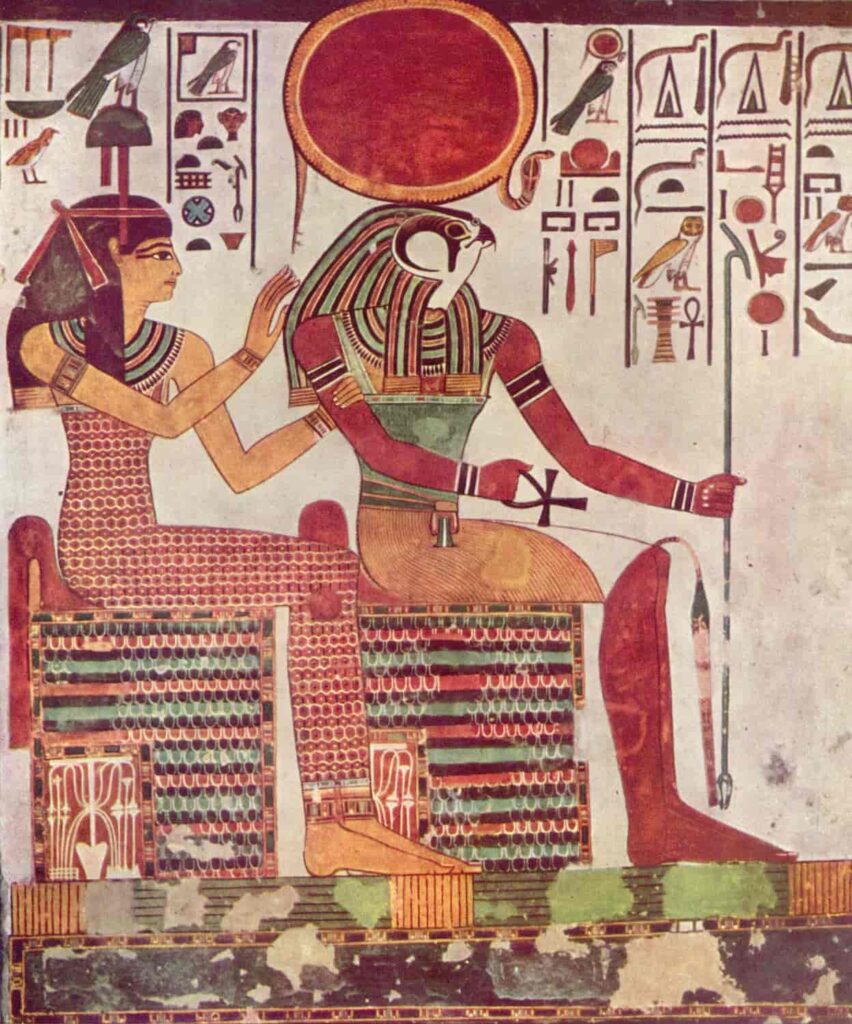
He is the supreme manifestation of the sun god in Heliopolis and a highly significant figure in the Egyptian pantheon. It is said that he emerged from a primordial mound rising from the waters of Nun and embarked on the act of creation. However, sometimes he is described as a boy emerging from a lotus flower. The Egyptians believed that the sun god was born anew every day. In the morning, after bathing and having breakfast, he begins his journey across the sky in his boat, spending one hour each day checking one of his 12 regions. When the sun sets, it is believed that the god Ra descends into the underworld until he is reborn the next morning. Throughout the night, this supreme deity has to battle his adversary, Apep, the terrifying cosmic serpent of the underworld.
Ra has two children: Shu, the god of air, and Tefnut, the goddess of moisture. According to one myth, these two male and female deities disappeared to explore the universe. When they were finally found, Ra was so overjoyed that he shed tears. The first humans were said to have been created from these tears. Another story tells of Ra becoming an old man and the goddess Isis deciding to discover his secret name. She mixes dirt with Ra’s saliva to form a snake and places it by the side of the road where the great god often walks. When Ra passes by, the snake bites him, injecting venom that causes him excruciating pain. Isis agrees to heal Ra only if he reveals his true name. In agony, Ra finally agrees to disclose his secret. Isis promises not to reveal what she knows to anyone except Horus and she heals Ra after learning his name.
Pharaohs referred to themselves as the “children of Ra” not only because this god was highly revered but also because it is said that the god restored order from chaos. Ra is often depicted as a falcon with the sun disk on his head.
Geb
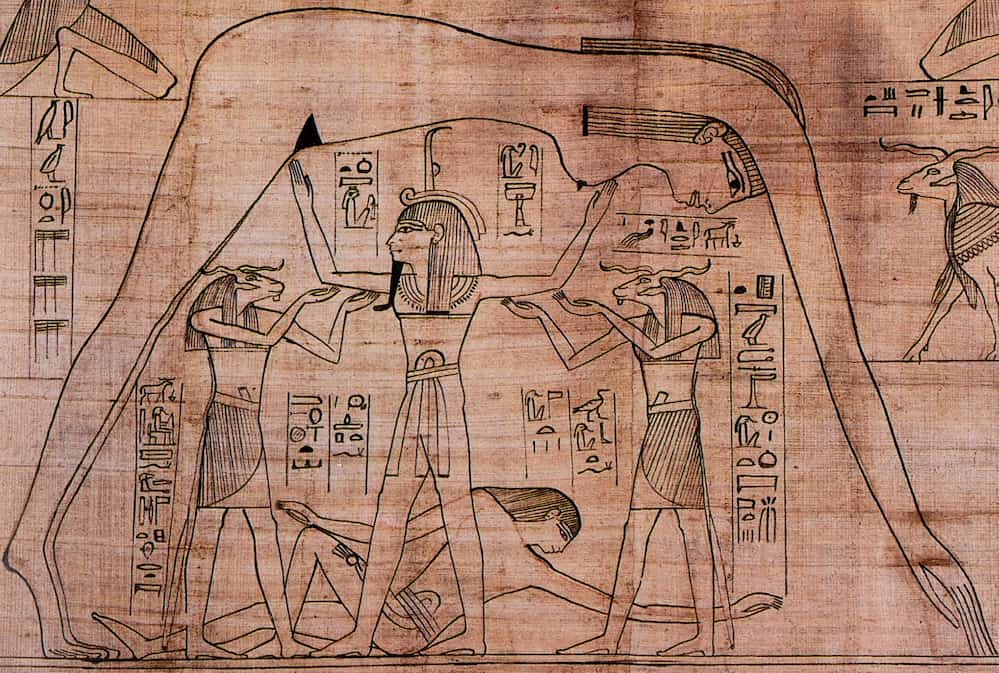
Geb is the Egyptian god of the earth and the brother and husband of the goddess Nut. He is the eldest son of Shu and Tefnut, the gods of air and moisture, respectively. According to some stories, Shu, or sometimes Ra, separated Geb and Nut while they were in a passionate embrace by forcefully pushing them apart, causing Nut to become the sky and Geb the earth. There was supposedly not enough space between them for Nut to give birth to her offspring. Geb, saddened by being separated from his beloved, caused earthquakes out of his grief. Geb is often seen as a benevolent god, providing humans with fertile land and healing them from illnesses. However, there is a fear that he may imprison the deceased within himself, preventing them from descending to the underworld. This deity is often depicted as a bearded man lying under the feet of the god Shu. Sometimes, he is portrayed in green, symbolizing vegetation growing from his body. Occasionally, he is depicted accompanied by a goose or in the form of a dreaming bull.
Geb is considered the “father of the gods,” and Nut is said to have given birth to Osiris, Isis, Nephthys, and Seth. Egyptian pharaohs referred to themselves as the “heirs of Geb.”
Nut

Nut is the Egyptian goddess of the sky and the twin sister of the earth god Geb. When she defied the sun god Ra by marrying her brother, Ra became extremely angry and instructed Shu to separate the couple. Shu pushed Nut upwards to create the sky and Geb downwards to form the earth. Ra also decreed that Nut was not allowed to bear children on any day of the year. However, due to Thoth’s pity for her, he challenged her to a game of senet against the moon god and, upon winning, only took the reward of enough moonlight to create five additional days. On each of those days, Nut gave birth to a child: Osiris, Seth, Isis, Nephthys, and, according to some accounts, Horus as well. Another tale recounts how Nut helped Ra escape humanity when he grew weary of their way of life. In the form of a cow, she lifted Ra onto her back. However, the taller Nut rose, the more dizzy she became, so she had to enlist four gods to hold onto her four legs, which then became the four pillars of the sky.
Shu
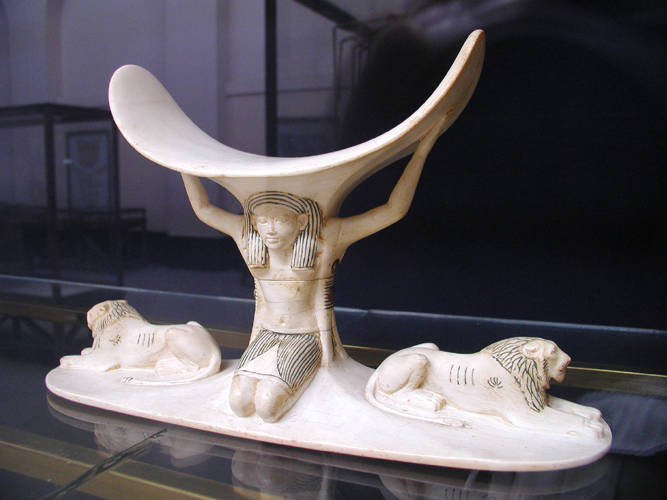
Shu is the Egyptian god of air and the husband of the first divine couple. His name is sometimes translated as “Emptiness” or “He Who Rises Up.” Shu was born when the supreme sun god, under the name Ra-Atum, coughed or sneezed and ejected him from his mouth. His wife is Tefnut, the moisture goddess, who was similarly born. Shu and Tefnut departed from Ra-Atum to explore the region of Nun, the primordial waters that have existed since the dawn of creation. Ra-Atum was distraught, believing he had lost his two children, so when he saw them return, he wept tears of joy, and from these tears, the first humans were formed.
Shu and Tefnut gave birth to Geb, the earth god, and Nut, the sky goddess. Later, Shu had to separate his two children by pushing Nut upwards to form the sky. The god is often depicted as supporting the sky.
Shu briefly succeeded Ra as the supreme god, but the followers of the evil serpent god Apep continued to oppose him. Frustrated by the ongoing conflict, he abdicated, allowing his son Geb to ascend the throne. After a terrible storm lasting over a week, Shu rose to dwell entirely in the sky. Sometimes, like the sun god Ra, Shu is depicted with a lion’s head.
Osiris

Osiris, the son of the Egyptian gods Geb and Nut, was originally a nature deity symbolizing the agricultural cycle. However, he gradually became associated with the realm of the dead. Upon his birth, he was hailed as the “Lord of the Universe” and grew to be a prominent deity. When his father stepped down, Osiris ascended to the throne of Egypt and married his sister, Isis, who became his queen. He taught humanity the art of breadmaking, and winemaking, oversaw the construction of the first temples, and sculpted the first statues for the gods. He also established cities and enacted just laws. As Egypt flourished culturally, he traveled to distant lands, spreading civilization wherever he went. His success was largely attributed to his charismatic ability to captivate people.
Upon Osiris’s return to Egypt, festivities were held to celebrate his homecoming. However, his brother Seth, consumed by jealousy over Osiris’s popularity, plotted against him. Seth arranged a banquet and, amidst the festivities, presented a beautifully adorned coffin. Pretending innocence, Seth announced that whoever fits inside the coffin perfectly could claim it. Osiris participated in the game and lay inside the coffin. Without hesitation, Seth sealed the coffin shut and had it thrown into the Nile River. Eventually, the coffin washed ashore in Byblos. According to one account, Seth killed Osiris after transforming into a crocodile, while another story claims Seth transformed into a bull and trampled Osiris to death.
When Isis learned of what had befallen her husband and brother, she was overcome with grief and set out to find Osiris’s body. Eventually, Isis found her husband’s body and brought it back to Egypt, hiding it in a marsh. Seth discovered the body, chopped it into 14 pieces, and scattered them across the land. Undeterred, Isis reassembled Osiris’s body and used her divine magic to resurrect him. This became the first embalming ritual. Osiris, now disenchanted with his brother, chose to renounce the mortal realm and retreated to govern the realm of the dead in the underworld. Here, he presided over the judgment of souls in the afterlife. Osiris is often depicted as a bearded man wrapped in mummy bandages, holding a crook and flail symbolizing kingship. He represents the regenerative powers of nature and also the threat that harsh weather conditions pose to human life.
Isis
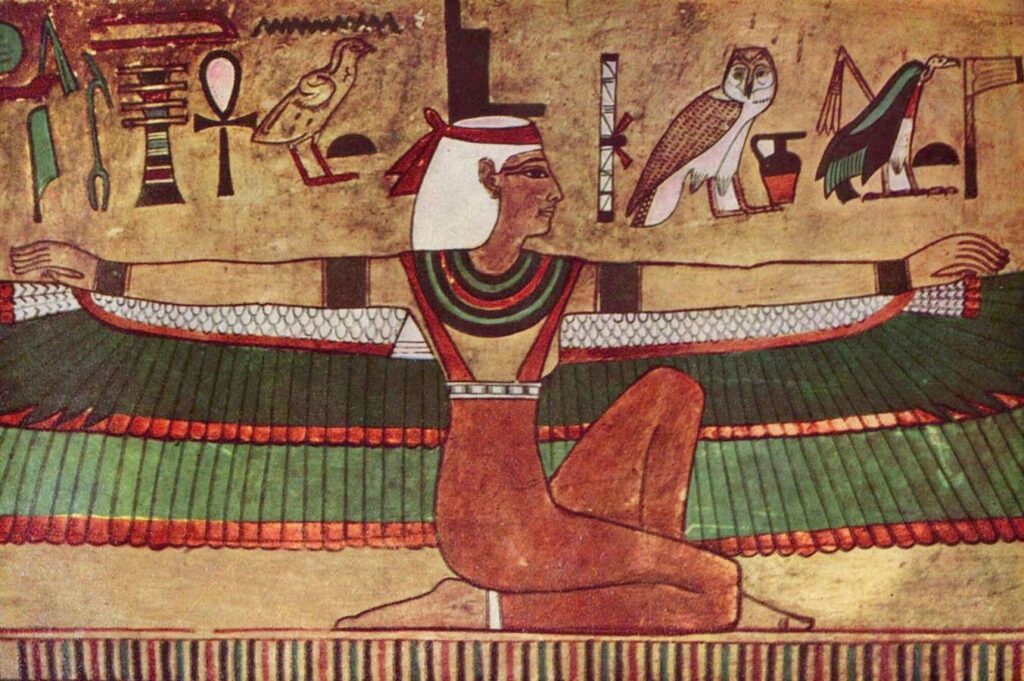
She is the mother goddess of Egypt, the daughter of Geb and Nut, and both the sister and wife of the god Osiris. She is often depicted with large, outspread wings, symbolizing protection, and is sometimes viewed as the personification of the royal scepter. The hieroglyphic symbol for her name resembles a throne and her folded legs are reminiscent of the throne of the pharaohs of Egypt. Isis aided Osiris in bringing civilization to Egypt by teaching women how to grind corn and weave cloth, as well as the rituals of marriage. When Osiris left Egypt to travel the world, Isis wisely and benevolently ruled the country in his absence. The Legends of Isis are found in various Egyptian texts and were compiled into a narrative by Plutarch in the first century CE.
Upon hearing of Osiris’s death at the hands of the evil god Seth, she was devastated. She cut her hair, dressed in mourning, and set out to find her husband’s body. Children informed Isis that they had seen Osiris’s coffin floating on the Nile and eventually washed out to sea. Finally, the coffin washed ashore beneath a majestic tamarisk tree on the coast of Byblos, Lebanon. The tree immediately grew around the coffin. Hearing of the strange tree, the king of Byblos ordered it cut down to serve as a pillar on his palace roof.
The news of the extraordinary tree spread rapidly. Isis deduced what had happened and hurried to Byblos, where she disguised herself and sat by a well in the center of the city. When some of the queen’s handmaidens came to the well for water, Isis braided their hair and infused it with a magical scent, causing the queen to invite the mysterious stranger in and offer to nurse the prince. Every night, Isis placed the prince in the fire to make him immortal, while she transformed into a swallow and circled the column inside which Osiris’s body was encased. One evening, the queen entered the room and saw her child lying in the fire, causing her to scream in horror, thus depriving the child of the chance to become immortal. Isis revealed her true identity and requested the column be given to her.
Her plea was granted, and Isis finally found Osiris’s body. The goddess brought the pieces back to Egypt and hid them in a marsh. However, Seth found the body, chopped it into 14 pieces, and scattered them across the land. With the help of other gods, Isis located the body parts, except for the genitalia, which had been eaten by fish. According to one version of the story, Isis then reassembled the body and, using her healing powers and divine magic, brought Osiris back to life. Before descending into the underworld, Osiris and Isis conceived a son, Horus. Isis was revered throughout Egypt and beyond. Over time, she assimilated the attributes of all other goddesses. She was a great mother goddess, a goddess of birds, a goddess of the underworld, the bestower of life to the dead, and the goddess of primordial waters. Her worship extended beyond Egypt, reaching Greece and throughout the Roman Empire. She was worshipped for over 3000 years, from more than 3000 years BCE to the Christian era. To this day, her worship and many of her depictions have been directly transferred to representations of the Virgin Mary.
Seth
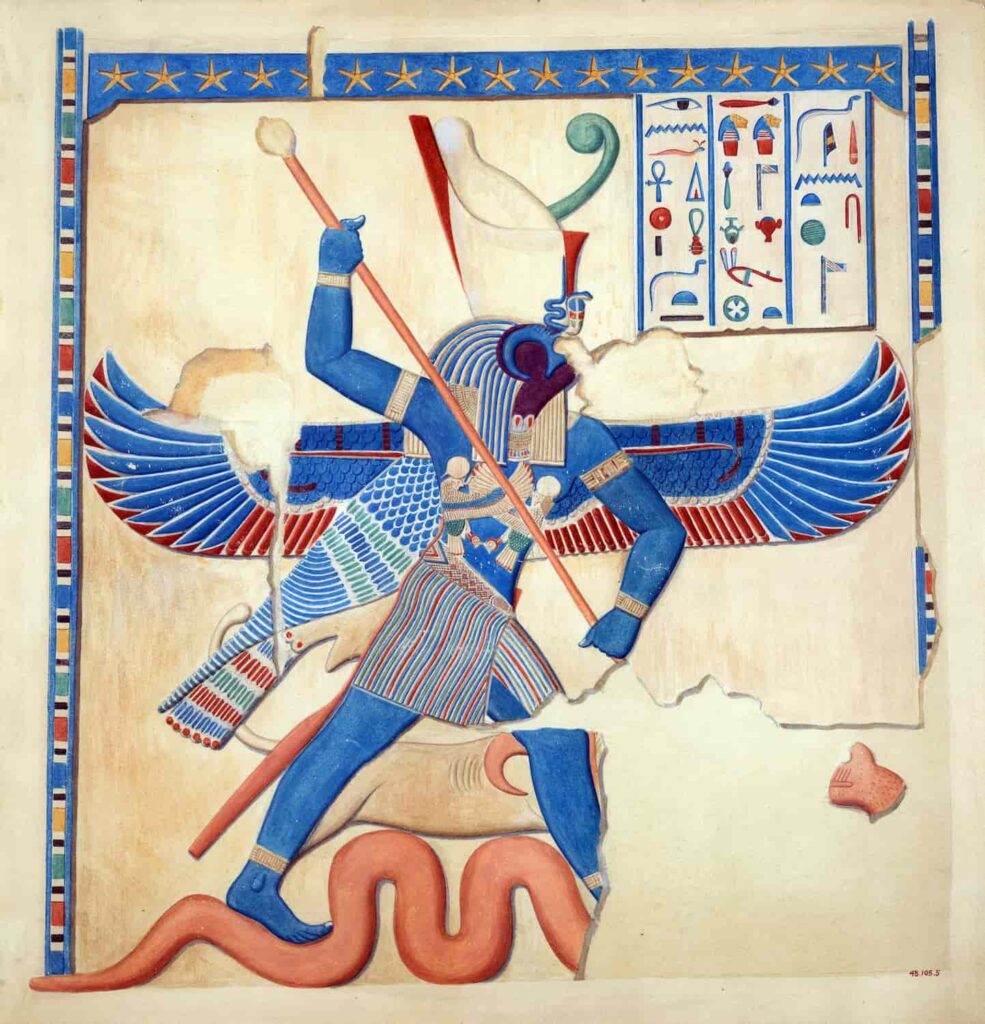
Seth, the god of storms and chaos in ancient Egypt, was often regarded as representing evil, although this deity was also respected in many places. He was the son of the earth god Geb and the sky goddess Nut, depicted as rough and sinister with red hair and white skin. Seth envied his kind-hearted elder brother Osiris and killed him, usurping the throne. However, Seth was unaware that Osiris and Isis had a son named Horus. Isis secretly raised Horus until he was old enough to avenge his father, and Osiris sometimes returned from the underworld to teach his son the art of warfare. When the time came, Horus fought Seth and defeated him. Before the court of the gods, Seth claimed he became the king of Egypt because he was the only one strong and brave enough to protect the sun god Ra.
Although some other gods supported Seth, Isis persuaded them to change their minds. When Osiris was asked, he demanded to know why his son was not allowed to take his rightful place on the throne and threatened to unleash demons from the underworld to attack the gods. Finally, the god Ra agreed to Horus’s demand. According to one account, Seth ascended to live with Ra in the sky. Another story claims Seth was sentenced to carry Osiris on his shoulders forever. Yet another tale suggests the goddess Neith proposed that Seth marry two other goddesses, Anat and Astarte, to console him for losing the throne to Horus. A story involving Seth and Anat recounts Seth’s chance encounter with the cow goddess Hathor bathing in a river and his subsequent rape of her. Immediately afterward, Seth fell seriously ill, and his wife, Anat, had to appeal to the god Ra. Eventually, Ra helped Anat heal her husband. The god Seth represents the rough aspects of the natural world and only thrives in the barren desert.
Nephthys
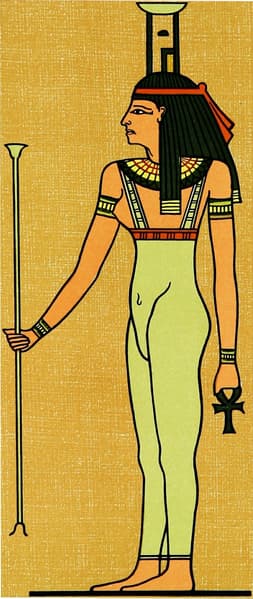
Nephthys, also known as Nebthet, the wife of the Egyptian god Seth, is the daughter of the god Geb and the sky goddess Nut. Her name means “Lady of the House.” This goddess is sometimes seen as a symbol of the barren desert land, often dry but occasionally yielding abundant crops after floods. Nephthys and Seth married without children. However, according to legend, Nephthys gave wine to her brother-in-law, Osiris, to seduce him and became pregnant with his child. In some versions of the story, the child she bore was Anubis, the god of embalming and the afterlife. When Seth killed Osiris, Nephthys immediately left her husband to join her sister in embalming Osiris’s body. The two goddesses then transformed into two kites hovering above the corpse, protecting it while awaiting burial. Therefore, Nephthys is closely associated with the dead.
Tefnut
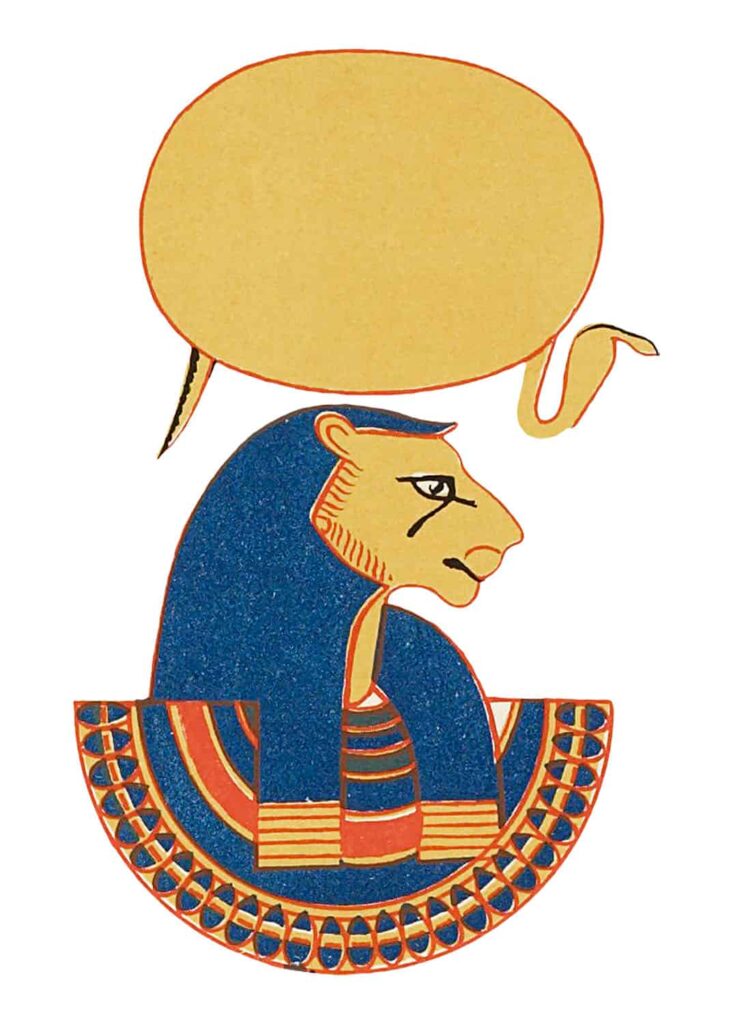
Tefnut, also known as Tefenet, is the daughter of Ra, Atum, and Iussaset. She is the goddess of moisture and warfare. She is depicted with a lioness head (the lion being a symbol of war), and the sun disk on her head represents her. She has two siblings, Shu, the god of air, and Hathor, the goddess of love and music. Her husband is Shu, one of the Great Enneads of Heliopolis. There are stories suggesting that she was born when Ra sneezed, and she emerged from his sneeze. She is most revered in Heliopolis (the city of the sun) and Leontopolis.


